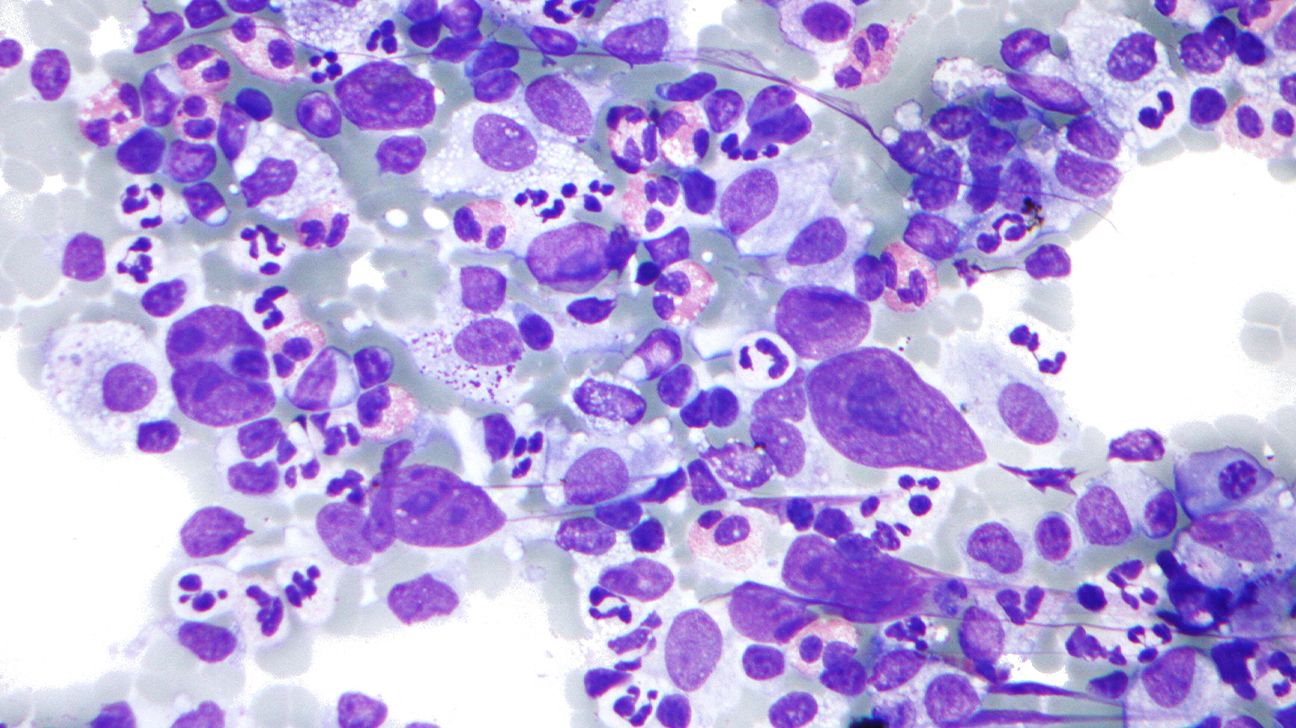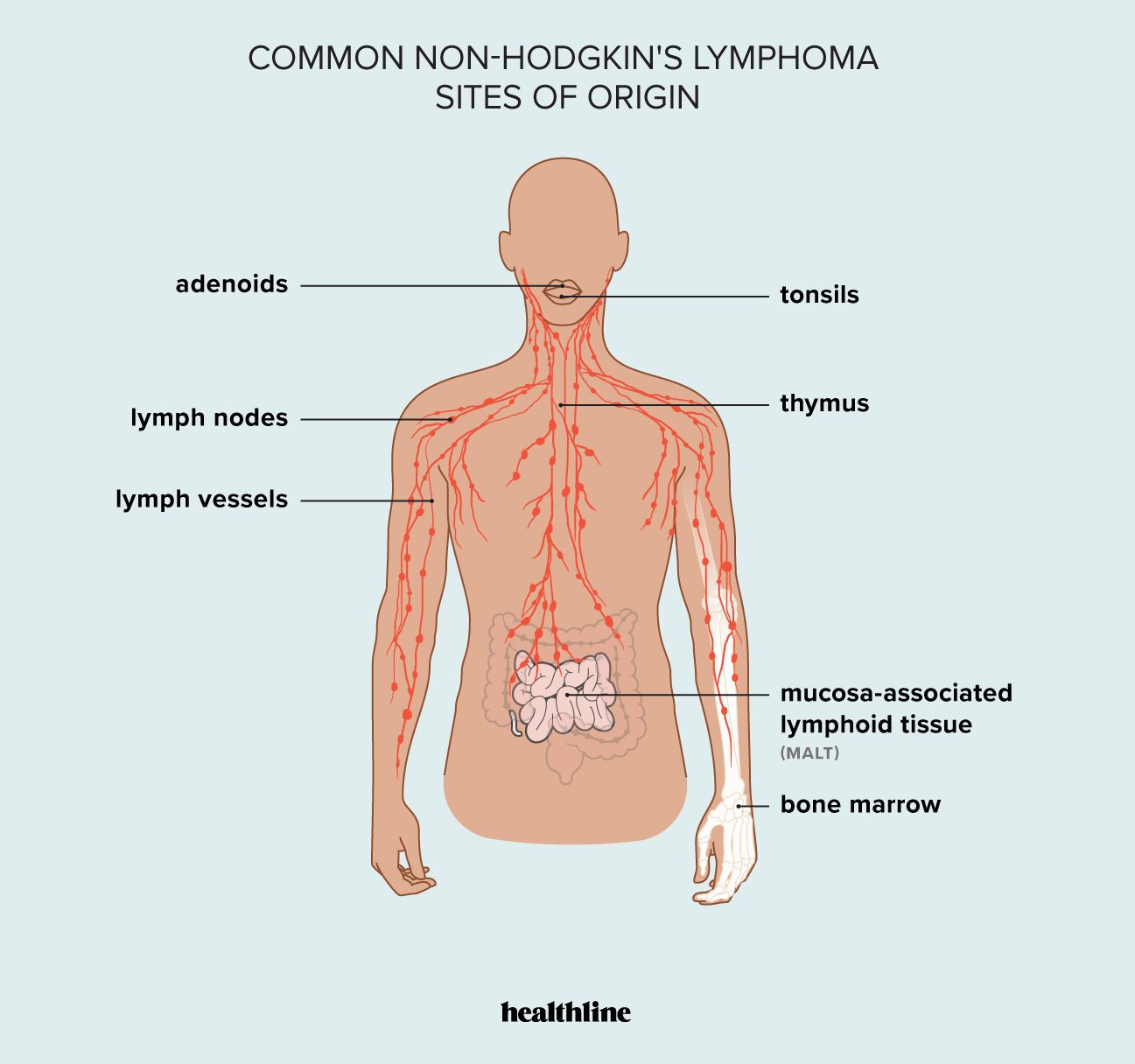Non-Hodgkin’s lymphoma (NHL) is a blood cancer that affects your lymphatic system. Early diagnosis and treatment can help improve the outlook for people with NHL.
Doctors classify lymphomas as either Hodgkin’s or non-Hodgkin’s lymphoma, depending on the presence of a certain type of cell called a Reed-Sternberg cell. If these cells are not present, doctors classify the cancer as NHL.
Over 60 subtypes of NHL exist, according to the Leukemia and Lymphoma Society. The

NHL starts in your
NHL first develops in specific types of white blood cells known as lymphocytes. These include B cells, T cells, and natural killer cells, which typically protect the body against infection and disease. But in NHL, these cells grow and divide uncontrollably.

Lymphocytes originate in the bone marrow, but you can find them circulating throughout your body, concentrated in lymph tissues like the:
NHL is
NHL can also begin in mucosal-associated lymphoid tissue (MALT), which is found in the lining of several organs, including the digestive tract and lungs.
NHL
NHL may cause other symptoms throughout your body. Some of the most noticeable include:
- abdominal pain and swelling
- chest pain
- skin rash
- easy bleeding and bruising
Some people with NHL experience
B symptoms of NHL include:
- fever above 38ºC (100.4ºF)
- drenching night sweats
- loss of 10% of body weight over 6 months
If a doctor notices symptoms like enlarged lymph nodes during a physical exam, they may request further testing. They may order urine or blood tests to help rule out infections. A complete blood count may also reveal signs of NHL.
Imaging, like CT and PET scans, can help doctors identify which organs may be affected. They
A doctor will likely perform a biopsy on any suspicious tissue or lymph node. This involves taking a small sample of the tissue and sending it to a lab for analysis under a microscope. A detailed analysis can confirm the presence of cancer cells and help diagnose the specific NHL subtype.
It will be important for doctors to determine the stage of your NHL. That’s a measure of how advanced the cancer is. Staging helps doctors determine the best treatment plan and provides some insight into your outlook.
To determine the stage, doctors will consider your symptoms as well as how widespread cancer cells are in your body. In stage 1 NHL, cancer cells are typically restrained to one area. But in stage 4 NHL (the most advanced), cancer cells have spread to an organ outside the lymphatic system.
CT and PET scans are instrumental in staging.
You may not always need immediate treatment for NHL. If it isn’t causing symptoms, a doctor may recommend monitoring your condition (“watchful waiting”).
If a doctor does recommend treatment, the first line is often chemotherapy. This involves taking medications, either by mouth or intravenously, to kill cancer cells. The specific chemotherapy drugs you take will depend on the type of NHL you have, but a
- rituximab (Rituxan)
- cyclophosphamide
- doxorubicin hydrochloride
- vincristine (Oncovin)
- prednisolone
Other common treatments for NHL include:
NHL treatments often have significant side effects. Even with successful treatment, you will still need to have regular follow-ups with a doctor to manage side effects and check for relapse. Some types of NHL, such as
Follow-up appointments typically include a physical exam and blood tests and may include imaging.
According to the ACS, the overall 5-year relative survival rate for NHL is
NHL is a common cancer but is usually treatable and has a generally favorable outlook. It may not cause noticeable symptoms in the early stages, yet early detection is key to improving your outlook. Contact a doctor if you notice symptoms like swollen lymph nodes so they can confirm the cause.




